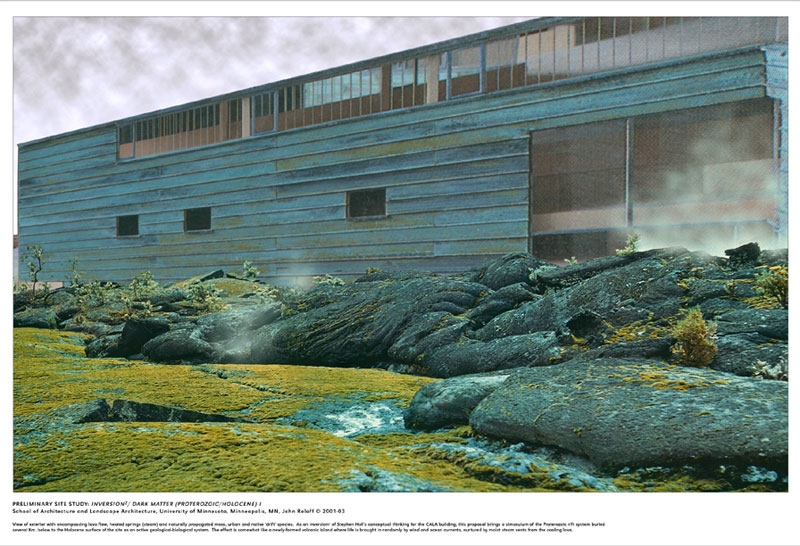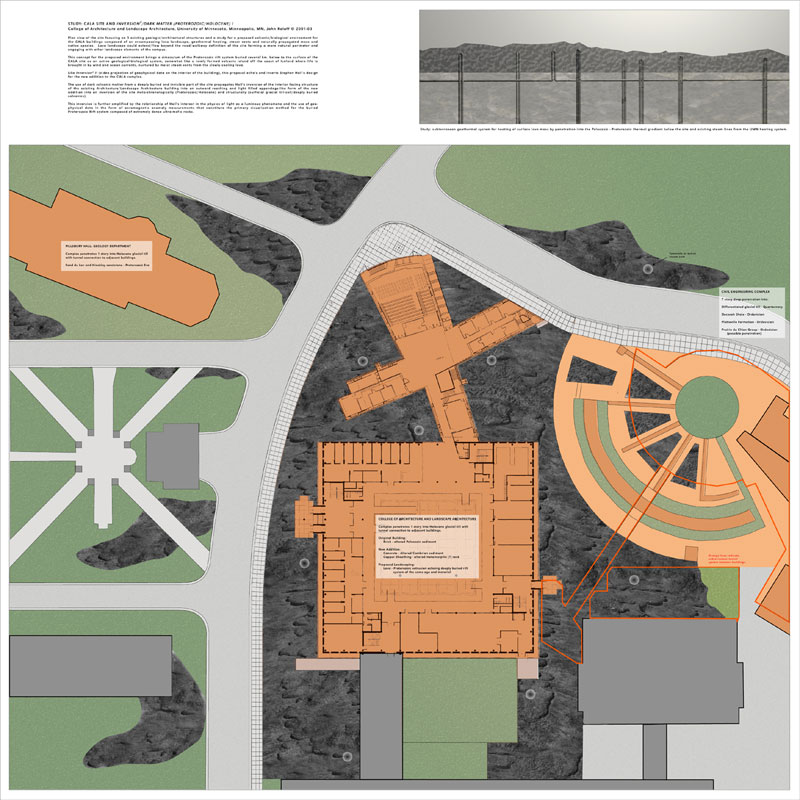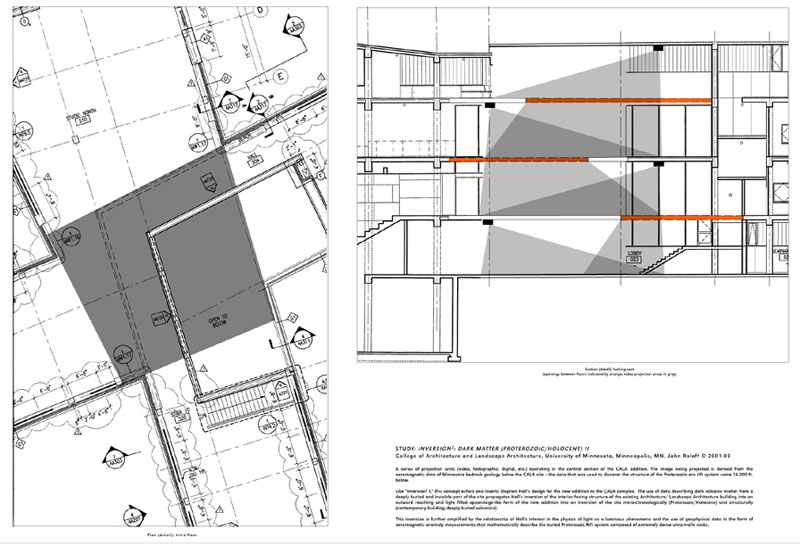Preliminary Site Study: Inversion2:
Dark Matter (Proterozoic/Holocene) I
Exterior view of proposal with encompassing lava flow, heated springs (steam) and
naturally propagated moss, urban and native 'drift' species. The effect is intended to create an analogous condition to
a newly-formed volcanic island where life is brought in randomly
by wind and ocean currents, nurtured by moist steam vents from
the
cooling lava, subverting the traditional concept of "planting" a site by design and placement.
Like Inversion2 II (video projection of geophysical data on the interior
of the building), this proposal echo's and inverts (squared) Stephen Holl's
design for the new addition to Rapson Hall. This proposal brings a simaculum of the Proterozoic rift system buried
several Km. below to the Holocene surface of the
site as an active geological-biological system.
The use of dark volcanic matter from a deeply buried and invisible
part of the site propagates Holl's inversion of the interior facing
structure of the existing Rapson Hall (older brick structure)
into an outward reaching and light filled appendage-like form of
the new addition into an inversion of the site meta-chronologically
(Proterozoic/Holocene) and structurally (surficial glacial till-soil/deeply
buried volcanics).
This inversion is further amplified by the relationship of Holl's
interest in the physics of light as a luminous phenomena and the
use of geo-physical data in the form of aeromagnetic anomaly measurements
that constitute the primary visualization method for the buried Proterozoic
Rift system composed of extremely dense ultra-mafic rocks.
|
Study (Plan View): Inversion2:
Dark Matter (Proterozoic/Holocene) I
Plan view of the site of 3 existing, neighboring geologic/architectural
structures contextualizing the Rapson Hall proposal of an encompassing lava landscape,
geothermal heating, steam vents and naturally propagated moss and
native species. Lava landscape could extend/flow beyond the road/walkway
definition of the site forming a more natural perimeter and engaging
with other landscape elements of the campus. The Geology building at the upper left of the image is clad in Proterozoic sandstone stratigraphically located above the deeply buried volcanic rift system referred to in the proposal. The Civil Engineering building shown at the middle left of the image, extends seven stories underground, itself a buried stratigraphic assemblage.
Upper right inset:
Study for a subterranean geothermal system for heating of surface lava
mass
by penetration
into the Paleozoic - Proterozoic thermal gradient
below the site and existing steam lines from the UMN heating system.
|
Study for Video
Projection: Inversion2:
Dark Matter (Proterozoic/Holocene) II
A
series of projection units (video, holographic, digital, etc,)
operating in the central section of the Rapson Hall addition. The image
being projected is derived from the aeromagnetic data of Minnesota
bedrock geology below the UMN site -- the data that was used to
discover the structure of the Proterozoic era rift system some 14.000
ft. below.
Like Inversion2 I, this concept echo's
and inverts Stephen Holl's design for the new addition to the Rapson Hall
complex. The use of data describing dark volcanic matter from a deeply
buried and invisible part of the site propagates Holl's inversion
of the interior facing structure of the existing College of Design building into an outward reaching and light filled appendage-like
form of the new addition into aninversion of the site meta-chronologically
(Proterozoic/Holocene) and structurally (contemporary building/deeply
buried volcanics).
This inversion is further amplified by the relationship of Holl's
interest in the physics of light as a luminous phenomena and the
use of geophysical data in the form of aero-magnetic anomaly measurements
that mathematically describe the buried Proterozoic Rift system composed
of extremely dense ultra-mafic rocks.
This project is intended to be installed in a smaller form in Rapson Hall. |





